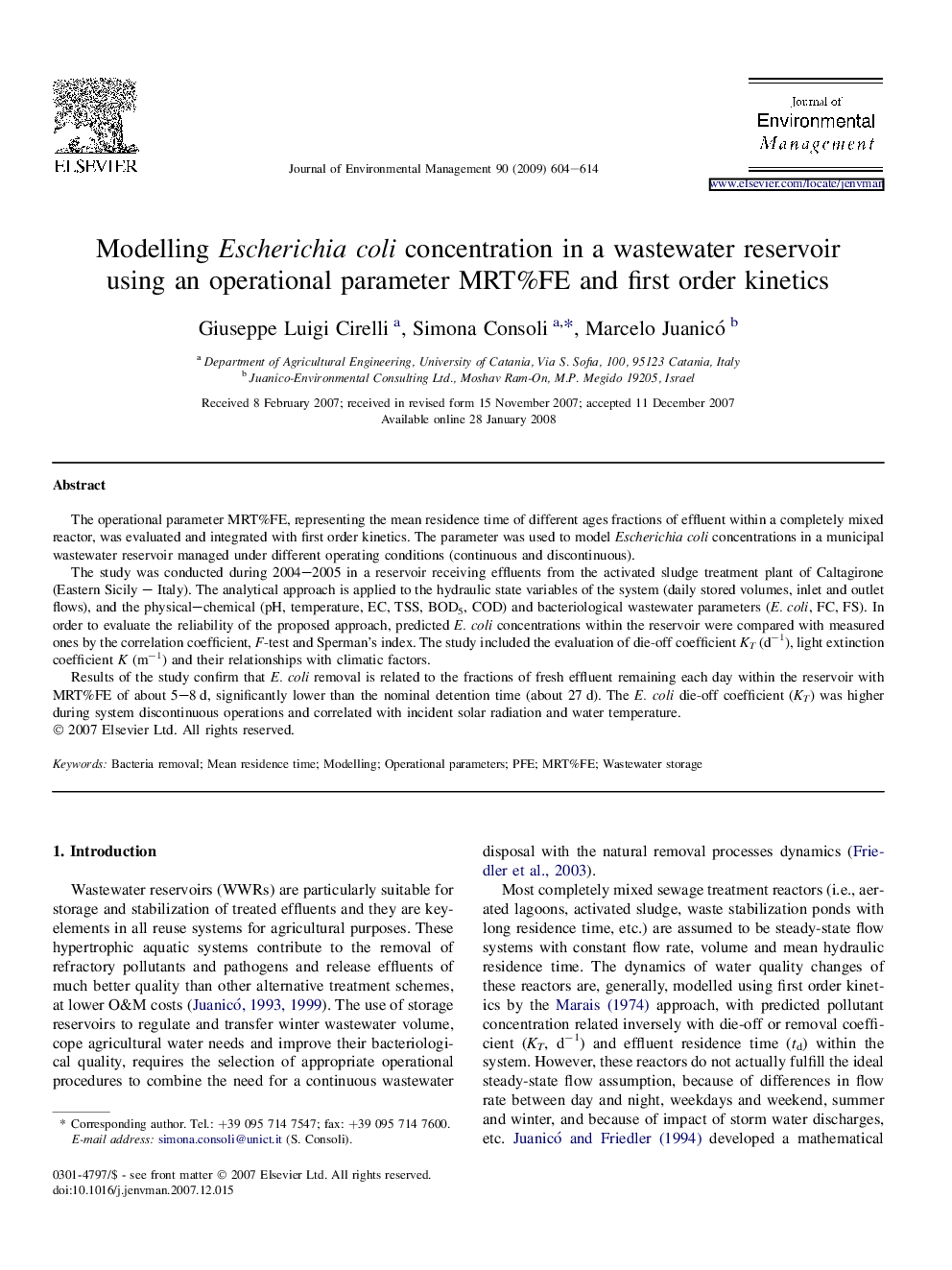| Article ID | Journal | Published Year | Pages | File Type |
|---|---|---|---|---|
| 1058127 | Journal of Environmental Management | 2009 | 11 Pages |
The operational parameter MRT%FE, representing the mean residence time of different ages fractions of effluent within a completely mixed reactor, was evaluated and integrated with first order kinetics. The parameter was used to model Escherichia coli concentrations in a municipal wastewater reservoir managed under different operating conditions (continuous and discontinuous).The study was conducted during 2004–2005 in a reservoir receiving effluents from the activated sludge treatment plant of Caltagirone (Eastern Sicily – Italy). The analytical approach is applied to the hydraulic state variables of the system (daily stored volumes, inlet and outlet flows), and the physical–chemical (pH, temperature, EC, TSS, BOD5, COD) and bacteriological wastewater parameters (E. coli, FC, FS). In order to evaluate the reliability of the proposed approach, predicted E. coli concentrations within the reservoir were compared with measured ones by the correlation coefficient, F-test and Sperman's index. The study included the evaluation of die-off coefficient KT (d−1), light extinction coefficient K (m−1) and their relationships with climatic factors.Results of the study confirm that E. coli removal is related to the fractions of fresh effluent remaining each day within the reservoir with MRT%FE of about 5–8 d, significantly lower than the nominal detention time (about 27 d). The E. coli die-off coefficient (KT) was higher during system discontinuous operations and correlated with incident solar radiation and water temperature.
